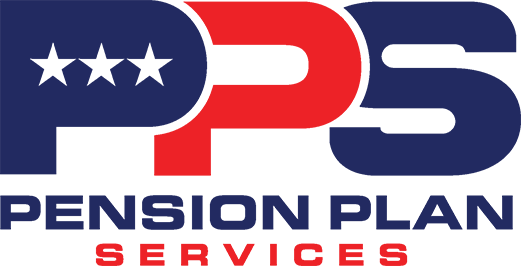Many American workers participate in company retirement plans, methodically contributing to their accounts over time to fund for life after work. Beyond benefiting from employer-funded plans, retirees commonly draw from additional savings tucked away in IRAs or after-tax savings accounts as well. Add Social Security payments to the mix and it should be a recipe for a secure retirement, right? While many retirees thoroughly plan for their retirement, the rising cost of living and unforeseen expenses can mean the retirement income may fall short of anticipated needs. The difference between your retirement income and actual expenses is known as your Retirement Income Gap.
WHAT CAN CAUSE A SHORTFALL?
Along with unexpected expenses, increased life expectancy and inflation top the list of culprits that can erode the purchasing power of your retirement account. In the US, average life expectancy is just under age 80 and is the age commonly used as a target for planning. But, that average includes the number of people who die young and unfortunately never see their retirement years. For those that have reached age 65, the Social Security Administration estimates that men will live to approximately age 84 and women to about 86, presenting a significant difference in the estimation of years in retirement. Additionally, in the last decade the US inflation rate has been historically low, averaging just 1.7 percent per year. This may lead savers to believe that this trend will continue into retirement. For the 12 months leading up to June 2018, the U.S. Labor Department published a 2.9 percent inflation rate, which is more in line with the U.S. historical average of 3.2 percent. That doesn’t sound so bad until you realize that at this rate prices will double every 20 years.
How can participants avoid a shortfall? Making sound decisions about the areas of retirement planning that employees can control goes a long way. Let’s look at the two biggest sources of retirement income and some guidance on how to maximize their benefits.
SOCIAL SECURITY – TIMING IS EVERYTHING
Social Security is the most common source of retirement income for those over age 65, with 88 percent of retirees relying on these monthly payments. Since workers can apply for Social Security as early as age 62, the most popular claiming age, it’s important to understand the effect that claiming early has on the amount of monthly benefit received. Generally speaking, people think of retirement age as 65. But, with Social Security the full retirement age varies depending on when you were born. Full retirement age is important since it is the age at which a person may first become entitled to unreduced retirement benefits.
WHAT HAPPENS IF YOU CLAIM EARLY?
Let’s take Joe Worker who was born in 1954. His full retirement age for Social Security benefits is age 66. If Joe started to take his benefit at age 62, his monthly benefit would be reduced by 25% for his lifetime. If Joe waited until he was age 66, he would receive his full benefit, 25% more, over his lifetime.
Additionally, if Joe deferred his benefit start date until age 70, he could earn “delayed credits” of about six to eight percent per year in addition to his cost of living adjustments. At age 70, Joe’s monthly benefit would be 66 percent higher than it would be at 62! Truly, when it comes to Social Security, timing is everything.
Social Security strategies and claiming choices can be extremely complicated, especially when you add in the strategies available to married couples. There are several calculators and available software services to help with this important analysis such as socialsecuritychoices.com and SSA.gov.
In 2018, the maximum Social Security benefit an individual can receive is $2,788 per month, or $33,456 per year. These benefits were never intended to fully replace one’s prior earnings. In fact, according to the Social Security Administration, this benefit only compensates for about 40 percent of an average wage earner’s income after retiring. Unless employees plan to reduce their lifestyle expenses, Social Security retirement benefits probably won’t cover all, or possibly even a majority, of future living costs. Let’s try to close the gap a bit further.
RETIREMENT ACCOUNTS
If your employees are relying on their 401(k) plan to close the retirement income gap, then committing to contributing early and consistently is key. While 401(k) plans are one of the best available retirement savings options for many, only 32 percent of American workers are participating in one. That is a surprisingly small number given that 59 percent of workers have access to these types of plans.
Saving early, consistently, and aggressively really helps. But, what’s the reality? A recent study by Vanguard entitled “How America Saves” showed the average 401(k) account balance by age group. Even at age 65 the average account balance was just under $197,000. If we use an average life expectancy in retirement of 20 years, these funds could provide an additional $9,850 per year (without investment growth). Add this to the maximum Social Security benefit of $33,456 and the resulting annual income is $43,306, not a particularly robust retirement income.
The income gap is markedly larger for female employees. A recent Student Loan Hero study found that women had about one-half the amount in retirement savings as their male counterparts. The low savings level is even further compounded by the fact that, on average, women live longer than men. The reasons for this short fall can stem from time away from the workforce for family reasons, but the women surveyed also cited a lack of knowledge about investing as a deterrent to joining their employer retirement plans or investing in an IRA account.
WHAT CAN EMPLOYEES DO TO BOOST THEIR SAVINGS?
It’s great if you started young, deferred 20% of your pay, and invested well. However, that may not be the case for many employees. Here are a few useful tips to get that retirement savings number up:
Start Saving Now – Reengage with those employees that are not participating in your retirement plan. Encourage them to get their benefit information from the Social Security Administration so they understand the baseline amount that will be forthcoming. All employees who are eligible for Social Security benefits can access their information by creating a secure account at SSA.gov.
Increase Contribution Levels – American culture has not taught us to be great savers. Though Americans aren’t the worst around the globe, countries like Japan have average savings rates of nearly 50% of their income! If you have employees deferring 1 to 3 percent of their pay, encourage them to bump up their rate.
Catch-up Contributions – Catch-up contributions are appropriately named! They were created to help employees who are age 50 or older “catch-up” for retirement. Not only can an individual defer $18,500 into a 401(k) plan in 2018, they can also contribute an additional $6,000 per year as a catch-up contribution.
Take advantage of Equity Investments – Be sure to speak with the plan’s advisor about the investment options available. With a low interest rate environment still in existence, fixed investment returns can erode retirement account growth. Taking advantage of equity-based investments can help grow your account through greater investment returns.
HELPFUL HINTS FOR PLAN SPONSORS
Being a plan sponsor comes with a good bit of responsibility. You’ve taken the important step of hiring a third-party administration firm to help you navigate the myriad of processes that are required to keep your plan in compliance with applicable regulations. Below are a few helpful hints to keep your plan in compliance, avoid unnecessary corrections, and help to better serve your participants.
Don’t ignore participant complaints – Dissatisfied employees can file complaints that trigger a government audit or file lawsuits that are expensive and time-consuming to handle, even if you win. Though it can seem annoying to deal with, even those participants who no longer work for your firm are entitled to information about their accounts. Try to answer their questions promptly and clearly. Explain any reason for benefit denials and the timing of distribution or loan payments. If you need guidance when approached by your participants, do not hesitate to contact your TPA.
Always report all your employees to your TPA – Though many plans can exclude various classes of employees for benefit purposes, there are lots of regulations that surround how far these exclusions can be applied before becoming discriminatory. Be sure that you report all employees during census collection whether they have chosen to join your plan, or not. If you have an automatic payroll feed to your TPA, you’ve really nailed this one!
Understand the correct compensation to report – Many plan sponsors assume that W-2 compensation is the only definition that can be used in a retirement plan. There are several definitions and exclusions that can be used for compensation so be sure you know what is in your plan document and discuss proper reporting with your TPA.
Review your Annual Valuation Report – The professionals at your TPA service provider apply a high level of care to your compliance reporting but an extra set of eyes never hurts. Check salary deferrals and compensation used for compliance testing to your payroll records to ensure that all figures tie to payroll. Spot check dates of birth and dates of hire for accuracy, especially for rehired employees.
Plan Document records – Be sure to keep a complete set of important plan records, including signed Plan Documents or Adoption Agreements, Summary Plan Descriptions, Compliance Reports, and 5500 forms, as well as any notices to participants, such as safe harbor notices.
Good intentions do not mean good compliance – A famous quote from an ERISA decision many years ago summed it up: “A pure heart and an empty head are not enough”. The IRS and the DOL expect complete compliance, not near compliance or well-intentioned attempts at compliance. Government regulations and requirements change, so keeping up without the help of professional service providers is difficult. Working hand in hand with your TPA firm and reporting accurate data will go a long way to ensure compliance.
Audits happen to plans of all sizes – Any number of events can trigger a plan audit, including participant complaints or even answers on your 5500 form. Some plan audits are also simply selected at random or can morph into a benefit audit from the corporate auditing division. Whatever the reason, receiving an audit notice can be a bit intimidating. Contact your TPA immediately if you receive such a notice from either the DOL or IRS.
UPCOMING COMPLIANCE DEADLINES FOR CALENDAR-YEAR PLANS (12/31)
September
15th – Required contributions are due for pension plans (Money Purchase, Target Benefit, and Defined Benefit plans) that end on the calendar year. 2017 profit sharing or matching contributions for calendar fiscal years for plan sponsors who filed a corporate tax extension are also due.
30th – Summary Annual Report (SAR) due to participants or beneficiaries receiving benefits under the plan as of the 12/31/2017 plan year end. The SAR is due on 9/30 (nine months after the plan year end) for calendar year plans that have not extended the due date of Form 5500.
October
1st – For 401(k) plans that will elect to utilize safe harbor provisions for 2019, the safe harbor notice must be provided to participants between October 1st and December 1st.
15th – Form 5500 (Annual Return/Report of Employee Benefit Plan) and Form 8955-SSA (Annual Registration Statement Identifying Separated Participants with Deferred Vested Benefits) are due without extension.
This newsletter is intended to provide general information on matters of interest in the area of qualified retirement plans and is distributed with the understanding that the publisher and distributor are not rendering legal, tax or other professional advice. Readers should not act or rely on any information in this newsletter without first seeking the advice of an independent tax advisor such as an attorney or CPA.

